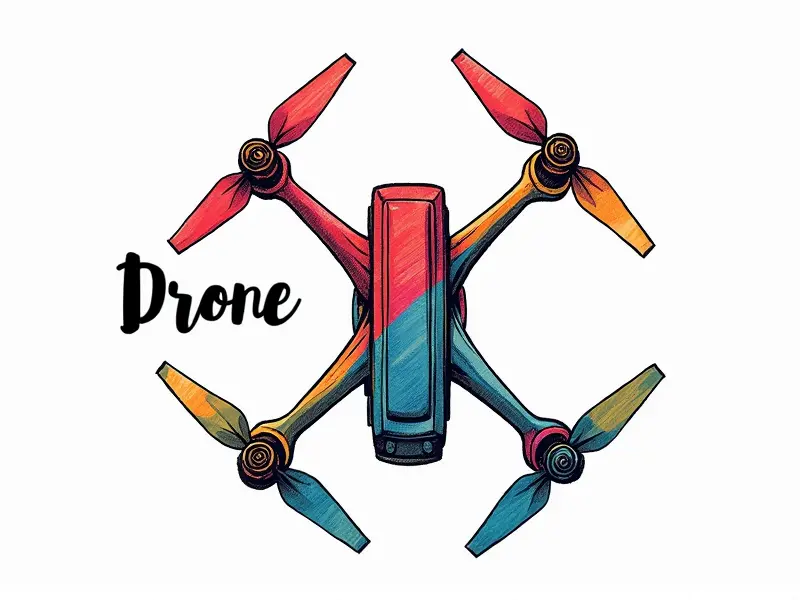Brushless motors?

Brushless Motors: The Ultimate Guide
Benefits of Brushless Motors for Drones
Brushless motors offer numerous advantages over their brushed counterparts, making them the preferred choice for modern drones. These motors provide higher efficiency and longer lifespan due to the absence of brushes that wear out over time. Additionally, brushless motors generate less heat and noise, contributing to a smoother flight experience.
Top Brushless Motors for FPV Racing
For enthusiasts involved in First-Person View (FPV) racing, selecting the right brushless motor is crucial for achieving top speeds and agile maneuverability. Some of the best options include:
- KDE Direct 3018-14 Brushless Motor: Known for its high torque and efficiency.
- T-Motor F55 Brushless Motor: Ideal for high-performance racing drones due to its power-to-weight ratio.
- Turnigy 2213-800Kv Brushless Motor: Offers excellent thrust and is widely used in competitive FPV setups.
Choosing the Right Brushless Motor
Selecting a brushless motor depends on several factors such as drone size, intended use (racing, photography), and power requirements. Considerations include:
- Kv Rating: Higher Kv ratings provide more speed but less torque.
- Motor Size: Larger motors generally offer higher thrust but weigh more.
- Battery Compatibility: Ensure the motor is compatible with your battery's voltage and capacity.
How Brushless Motors Work Explained
A brushless motor operates by using electronic commutation instead of mechanical brushes. This system involves:
- Sensor Feedback: Hall effect sensors detect the rotor's position.
- Electronic Control Unit (ECU): Manages the switching of current to coils based on sensor data.
- Copper Windings and Magnets: The interaction between these components generates rotational force.
Understanding Brushless vs. brushed Motors
The primary differences lie in their construction and performance:
- Brushed Motors: Use mechanical brushes to switch current, leading to wear and reduced lifespan.
- Brushless Motors: Utilize electronic commutation for longer life, higher efficiency, and better performance.
Powering Quadcopters with Brushless Tech
Quadcopters benefit immensely from brushless motors due to their lightweight design and high power output. Key considerations include:
- Battery Capacity: Ensure sufficient battery capacity for sustained flight.
- Motor Configuration: Optimal motor placement and size are crucial for balanced performance.
- Propeller Selection: Matching propellers to motors ensures optimal thrust and efficiency.
Maximize Flight Time with Efficient Motors
To extend flight duration, focus on:
- Selecting High-Efficiency Motors: Opt for motors with high Kv ratings for better power-to-weight ratios.
- Battery Management: Use efficient batteries and monitor their condition regularly.
- Weight Optimization: Minimize unnecessary weight to reduce energy consumption.
Maintenance Tips for Brushless Motors
Proper maintenance ensures longevity:
- Clean Regularly: Remove dust and debris from the motor housing.
- Lubricate Bearings: Apply a small amount of high-temperature grease to maintain smooth operation.
- Monitor Performance: Keep an eye on any unusual noises or vibrations indicating potential issues.
Boosting Performance with High-Quality Brushless Motors
Incorporating premium brushless motors can significantly enhance your drone's capabilities:
- Increased Speed and Agility: Higher Kv ratings offer faster response times.
- Better Stability: Enhanced control over the drone’s movements for smoother flights.
- Extended Lifespan: High-quality components reduce wear and tear, extending motor life.
Upgrading to Brushless Motors Guide
If you're considering an upgrade:
- Evaluate Current Setup: Assess your drone's current performance limitations.
- Select Appropriate Motor: Choose a motor that matches your drone’s specifications and intended use.
- Install Properly: Ensure correct installation to avoid damaging the motor or other components.
Why Use Brushless Motors for RC?
The advantages of brushless motors in remote-controlled (RC) applications are clear:
- Better Efficiency and Performance: Higher power output with less energy consumption.
- Durability: Longer lifespan due to the absence of mechanical brushes that wear out quickly.
- Quiet Operation: Reduced noise levels contribute to a more enjoyable flying experience.
Conclusion
In conclusion, brushless motors offer unparalleled benefits for drones and RC vehicles. Their efficiency, durability, and performance make them the go-to choice for enthusiasts seeking top-tier results. Whether you're upgrading your existing setup or building from scratch, incorporating high-quality brushless motors can significantly enhance your flying experience.

